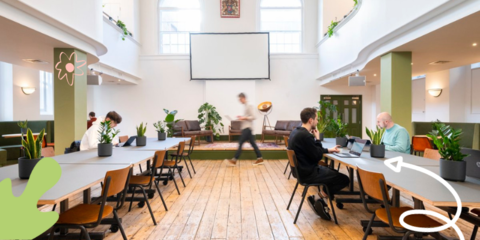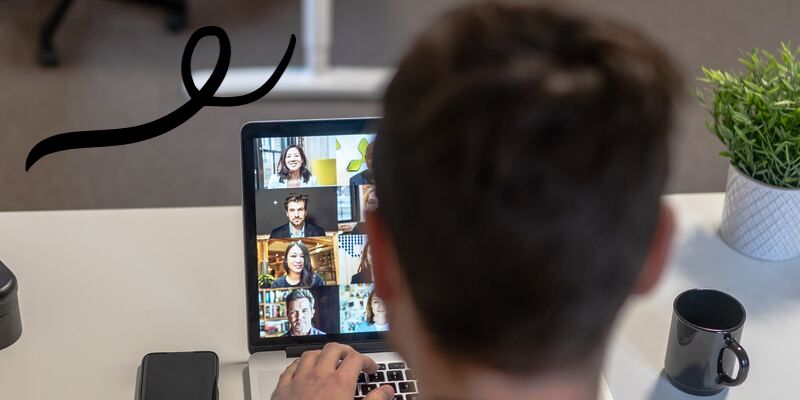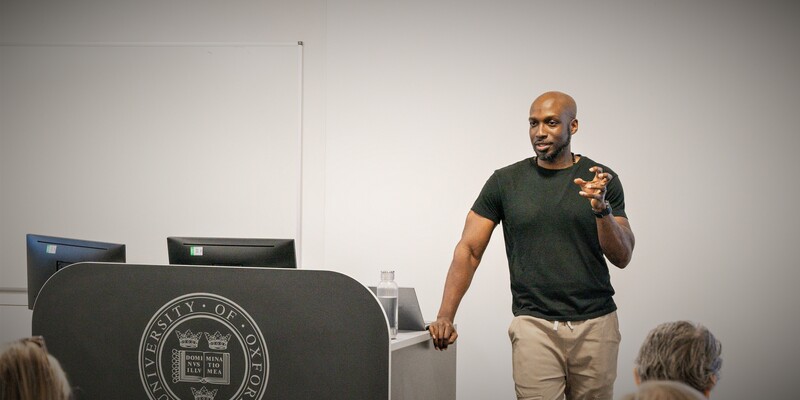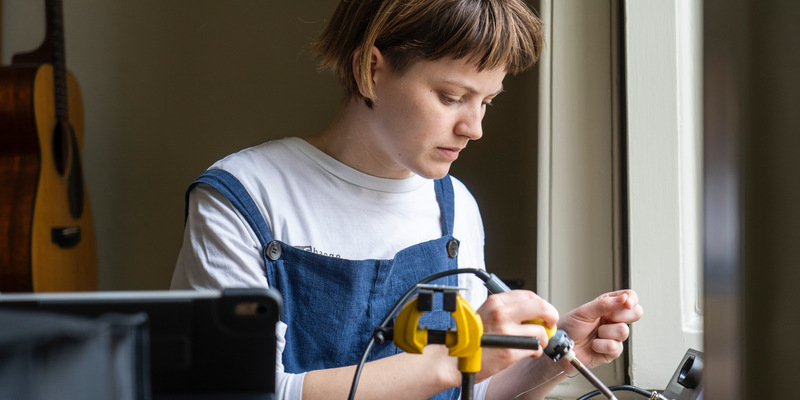Reclaim your focus with productive meditation


By Arjun Kumar
•
Jun 16, 2023
We all know that in today’s fast-paced and distraction-filled world that finding (and maintaining) focus is an ongoing challenge.
With a seemingly never-ending influx of notifications and responsibilities it’s no wonder our ability to focus on the task at hand has been severely impaired.
Thankfully, all is not lost — buried beneath the digital dings, pings and gadgets an age-old practice, re-imagined by computer scientist and productivity writer Cal Newport, could be just the ticket in helping to refresh our minds and sharpen our focus:
Productive meditation.
Let’s take a look at how this practice can be a game-changer when it comes to increasing focus and concentration — vital currencies in today’s attention economy, and the keys to unlocking your ability to boost your productivity and solve problems with ease.
Where did meditation come from?
Meditation is a practice that has been interwoven with human history for thousands of years. There are recorded references in Hindu scriptures known as the Vedas, dating back over 5,000 years.
Through the writings of Lao Tzu Taoist philosophy embraced meditation as a means of attuning to nature with practices focused on cultivating stillness and mindfulness. In ancient Greece, Plato and the Stoics practiced various forms of meditation to support introspection, self-reflection and the cultivating of moral virtues.
Put simply, meditation is a means of noticing one’s mind and/or body. Through resting the attention on an object, or even a bodily function such as your breath, you engage in the present moment. Sounds simple, but getting started isn't always easy.
How to start meditating
Naturally when you first begin meditating, the mind will wander off in all kinds of directions — to memories, emails, what’s for dinner etc. Simply noticing this distraction without judgement, then bringing the attention back to your point of focus (e.g. the breath), over and over again, is what the practice centers on.
The ‘distraction’ isn’t a sign that you’re ‘doing it wrong’ but rather a means of recognising that the mind has wandered, granting you the opportunity to return your attention to your point of focus.
There are various techniques and styles of meditation (sitting, lying down, walking, breath awareness, body scan, to name just a few), but the fundamental principle remains the same — training the mind to focus and be fully present.
What is productive meditation?
Productive meditation follows the same principles as traditional meditation, though with a slightly different objective.
By combining the principles of meditation practice with focused problem-solving or creative thinking, Cal Newport has blended two worlds together. In his book, Deep Work: Rules for Focused Success in a Distracted World, Newport encourages us to ‘embrace boredom’ and harness our attention through ‘productive meditation’
"The goal of productive meditation is to take a period in which you're occupied physically but not mentally—walking, jogging, driving, showering—and focus your attention on a single well-defined professional problem."
The concept of productive meditation involves using the enhanced capacity for focus that meditation provides, to generate ideas and insights while engaging in your everyday non-demanding physical tasks — i.e. the things you do on autopilot, where the body is performing an activity as your mind drifts to more fun or pressing matters.
The great thing about this practice is the value it adds to many of our boring tasks — doing the dishes, walking to the shops, having a shower etc. — and allows us to use these daily rhythms to level up our minds.
Productive meditation in 3 simple steps
- You choose an activity in which your body can be occupied without your mind needing to be.
- Decide on a problem to solve or a topic to ideate on.
- Devote time to thinking on it for the duration
Naturally you will get distracted by that email, that upcoming holiday or (insert your favourite distraction here) — the skill is in the training. When your mind wanders, come back to the original problem or topic without judging or criticising yourself. Over. And over. Again.
"Keeping the mind happy makes work effortless. This is the skill for productivity!"
The benefits of productive meditation
If the ‘goal’ of traditional meditation is often to quiet the mind and observe thoughts without judgment, productive meditation encourages active engagement of the mind. You intentionally direct your thoughts and mental energy toward exploring solutions, generating ideas, or capturing new insights on the challenge you’re working on.
Consider asking yourself questions, visualising scenarios, or mentally exploring new perspectives during your productive meditation. This will allow you to leverage the brain's capacity for focused thinking, boost your cognitive abilities, and generate the valuable insights that might not emerge during traditional work or leisure activities.
As with ‘traditional’ meditation, the mind doesn’t get the reward at the end of the distraction, it gets pulled back each time. Newport likens this process to weight-lifting reps for your attention and focus. At first the practice feels heavy and challenging, but the more you train, the easier it gets and the stronger the muscle of attention becomes.
The science of productive meditation and divergent thinking
Alongside focusing on a problem or task, productive meditation can also be used to allow the mind to wander freely and explore ideas and perspectives, which creates the potential to discover original solutions.
We all daydream, a lot. Productive meditation is closely related to positive constructive daydreaming (PCD), a term coined by psychologist and researcher Jerome L. Singer — which describes a form of daydreaming that is positive, playful and purposeful.
Where passive daydreaming often may be aimless and without intention, PCD requires your conscious engagement in mental stimulations and imaginative scenarios. This form of daydreaming has been shown to boost creativity, enhance cognitive flexibility, and improve problem-solving skills.
Neuro-scientific research is beginning to demonstrate some of the benefits on the brain when practicing productive meditation. Studies show that the brain enters a state of relaxed alertness (or wakeful rest) during periods of daydreaming or mind-wandering, characterised by alpha waves between 8-12Hz.
Alpha waves are indicative of the attention’s shift away from an external focus. At this frequency, your brain is able to absorb new information more readily and access a larger number of neural connections simultaneously.
This heightened alpha wave activity ignites the brain’s default mode network (DMN) to spur improved creativity, enhanced cognitive flexibility, and increased access to subconscious insights.
Here a few tips to get your productive meditation practice started:
How to get started with productive meditation
Define your aim
Clearly define a problem or topic that you want to explore — this focused intention will be supportive in guiding your attention and thoughts towards your outcome, as well as be a marker to come back to when you notice being distracted.
Journaling can be a helpful way to do this.
Choose your activity
Pick a routine activity that doesn't require a lot of concentration and brain energy — walking, showering or doing the dishes — something you know you can do effortlessly whilst engaging in a productive meditation.
Embrace mind wandering
Set a timer, and allow the mind to wander freely without the need to suppress unrelated thoughts — enabling a spontaneous flow.
Note down your insights
Keep a pad and pen or digital equivalent handy to capture any interesting and valuable insights that may arise during your session.
Reflect on the experience
After any session, take a few moments to reflect on what came up — however minimal, the contemplation can be the nurturing of a seed. How might these insights be applied to your problem or topic?
Be consistent
Like any other new skill, regular practice is key to seeing the benefits. See how it is to set aside time each week or day to engage in the practice.
At it’s core, productive meditation may be about ideation, stimulating creativity and problem solving, but its unique approach towards those outcomes comes with some pretty wonderful ancillary benefits that are usually associated with traditional meditation. Things such as strengthening of attention and stress reduction all naturally occur as you practice this form of meditation and enrich those mundane daily activities. What’s not to love!?


















